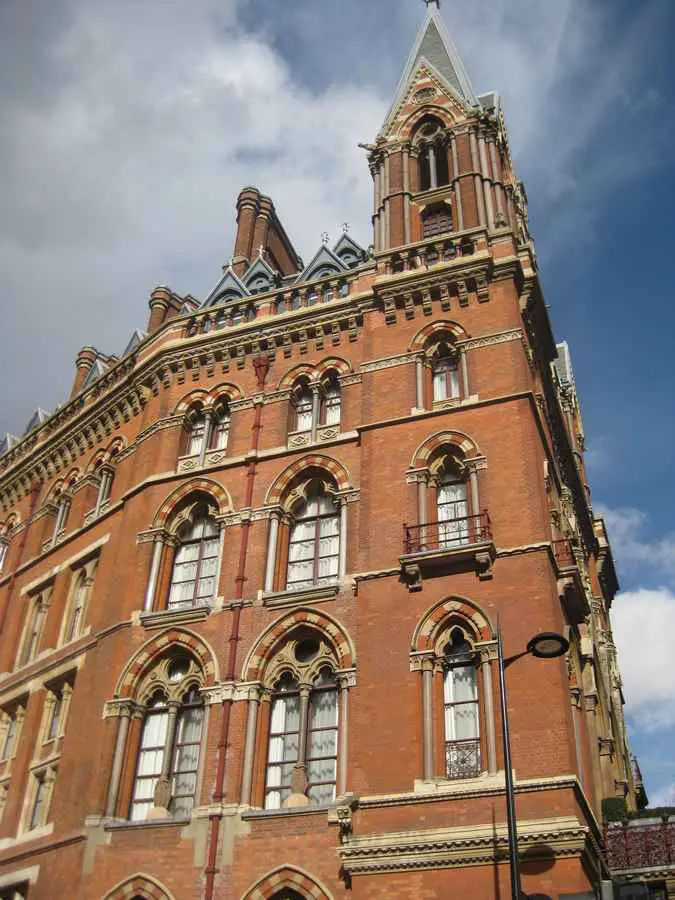George Gilbert Scott architect, British building photos, English design projects, Office
George Gilbert Scott Architect
19th Century Architecture Practice in England, UK
post updated 18 May 2025
The two Scott brothers created some landmark designs for England and Scotland: the classic red phone box, Liverpool’s Anglican Cathedral and Edinburgh’s soaring spires – St Mary’s Cathedral.
George Gilbert Scott (1811-78)
The most important building by George Gilbert Scott – St Pancras London:
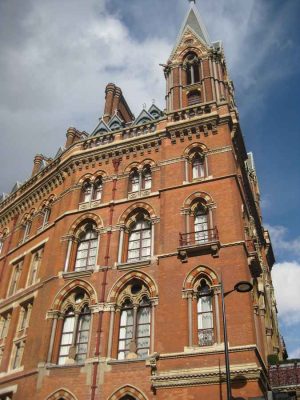
photo © Adrian Welch
George Gilbert Scott Architect News
Key architectural projects by the architect, alphabetical:
Albert Memorial, London
British Home Office, London
McManus Galleries, Dundee
St Mary’s Cathedral, Edinburgh
St Pancras Station, London
University of Glasgow
George Gilbert Scott – Background + Key Buildings
This English Gothic architect is probably best known for St Pancras Station and for the Albert Memorial.
A key member of the British Gothic Revival, Scott designed many public structures. His design for the Church of St Nicholas in Hamburg won first place in an 1844 competition. He also directed much Gothic restoration work, beginning with renovations of Ely Cathedral and including Westminster Abbey. Among George Gilbert’s other designs were the buildings for the British Home Office, the Albert Memorial, and St Pancras Station, London.
The Albert Memorial is 180 ft high and located on the southwest side of Hyde Park opposite the Albert Hall. It was designed in 1872, completed in 1876 and opened by Queen Victoria.
George Gilbert Scott – Key Building
Albert Memorial, Hyde Park / Kensington Gardens, west London, England, UK
Date built: 1872-76
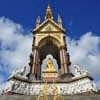
photograph © Nick Weall
Albert Memorial London
Midland Grand Hotel, north London, England, UK
Date built: 1876 (8 years after St Pancras Station located adjacent to the north)
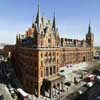
photo © Hufton+Crow
St Pancras Station
– revitalised Victorian railway hotel
GG Scott won the architecture competition, 11 architects were invited
– 300-room hotel,150 rooms in the brief, he got carried away!
– included many innovative features including hydraulic ‘ascending chambers’, concrete floors, revolving doors and a fireproof floor construction.
– The Victorian decor was rich, lavish and expensive, with suites of rooms decorated with gold-leafed walls and a blazing fire in every room.
– closed in 1935
The Foreign Office and India Office – Durbar Court, King Charles St, London SW1, England, UK
Design: Sir George Gilbert Scott & Matthew Digby Wyatt
Date built: 1861-68
Grade I listed Victorian buildings
St Mary’s Cathedral, Edinburgh, Scotland
Date built: 1879
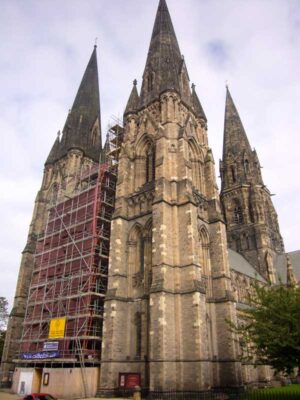
photo © Adrian Welch
St Mary’s Cathedral
University of Glasgow, Strathclyde, Scotland – The Main Building
Date built: 1886
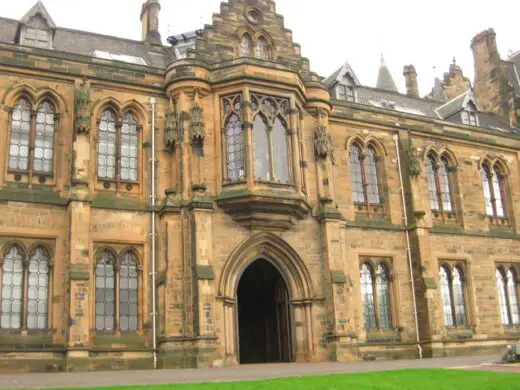
photo © Harriet Lomholt-Welch
University of Glasgow
McManus Galleries, Dundee, Tayside, Scotland
Date built: 1867
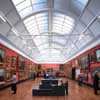
photo : Andrew Lee
McManus Galleries, Dundee
Redevelopment in 2010 – design by Page Park Architects
The McManus Galleries were originally dedicated to Queen Victoria’s Consort and named the Albert Institute. Conceived as a focus for literature, science and art, the architect created a powerful gothic icon reflecting the city’s contemporary confidence, wealth and intellect in 1867. The Victoria Galleries were added in 1889 completing the building envelope as it is today.
RIBA Gold Medal 1859 Winner
Location: London, south east England, UK
19th Century British Architect Practice Information
Early 19th century British architect
Sir Giles Gilbert Scott
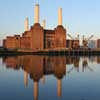
photograph © Nick Weall
London Architectural Designs
London Architecture Designs – chronological list
London Architect – design practice listing on e-architect
George Gilbert Scott Scotland – Scottish buildings
Scottish Castles in Edinburgh & Lothian
This famous British architect is buried in Westminster Abbey, central London.
Comments / photos for the George Gilbert Scott Architect page welcome

